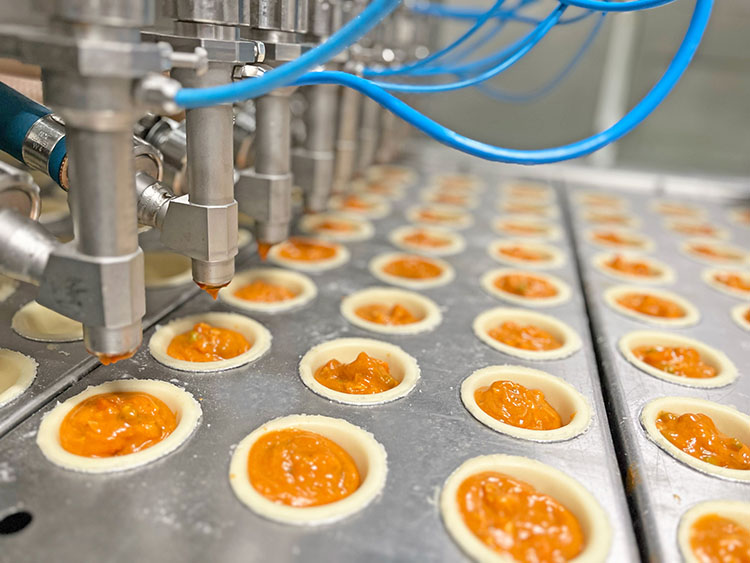
Every season sparks pie joy
Whether the pies have an open top – covered with various ingredients, or are closed with dough, lattice, or crumble, the technology needs to produce excellent results no matter the recipe and material changes.
Whether the pies have an open top – covered with various ingredients, or are closed with dough, lattice, or crumble, the technology needs to produce excellent results no matter the recipe and material changes.
Chip Czulada embarked on a new role as the President of Reading Bakery Systems (RBS) at the beginning of 2024. He shares with Baking+Biscuit International magazine his view on the first six months at the helm of the company where he has been working for over 20 years.
An entire fleet of iconic crackers built its consumer base on their open, flaky texture, which is produced by layering the dough. Reading Bakery Systems designed a new, 90-degree technology concept for the laminators manufacturing this dough.
Automated production lines are the solution to optimizing production and optimally allocating resources, including a critical one: the people on the production floor. Designing the turnkey line that fits best with a given environment throughout each process step also starts with people: the design team tasked with bringing together only the perfect pieces of the puzzle that will become a new line.
Fully automating kneading and mixing is an ambitious endeavor, given the complexity of the process, and the diversity of raw ingredients.
The Rademaker Pie and Quiche line is developed to produce an extensive assortment of pies and quiches from all cultures, ranging from meat pies, fruit pies, egg tarts (such as the beloved Pasta del Nata) and cheesecakes, to Melton pies, pork pies and even quiches; pies with an open top or closed with a dough lid, or crumbled top.
Rademaker designed its bread line for production efficiency, for a diverse range of breads including small baguettes, baguettes, triangle buns, square buns, hexagonal shaped buns, decorated/stamped buns, ciabatta, focaccia, pave, bagels and for a large variation of rounded products.
The conversation around increasing manufacturing sustainability will unavoidably start with analyzing ovens, for any baking operation. Visible results are a necessity.
At home or at the restaurant, for lunch, office parties, or even for breakfast, ordered in person or online, the interest in pizza choices never fades. On the contrary, new, exciting taste offerings, product claims and ingredient combinations are welcomed opportunities to experiment.
Snacks are diverse and enticing additions to any eating occasion, whether they stand in for an entire meal, or are seen as a treat, a catering option for events, or a movie-night companion. Manufacturers stand to gain by keeping up the pace with innovations in this category. Extrusion provides particularly interesting opportunities.
Technology is optimized to meet the clear trend for flexible equipment that can support changes in production and a diverse range of breads, respectively. New developments also aim at bridging the gap between artisan and industrial production, in terms of product quality and production volumes.
Last time iba was staged in person, it provided a platform for EUR 2.1 billion in trade fair contracts.

